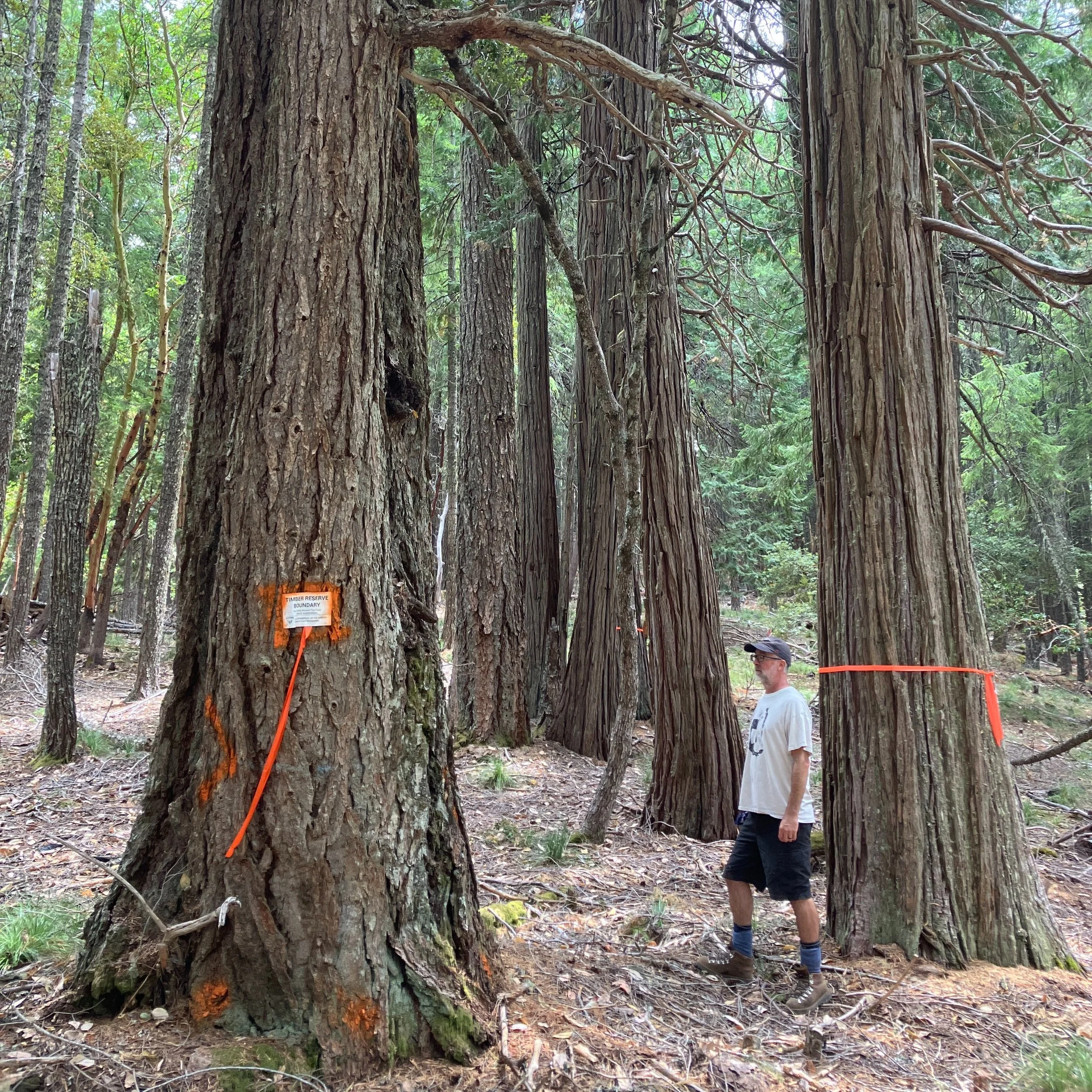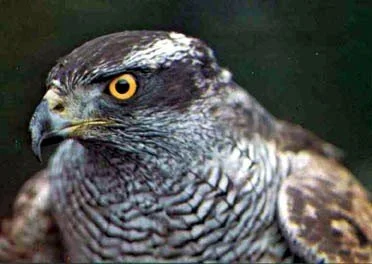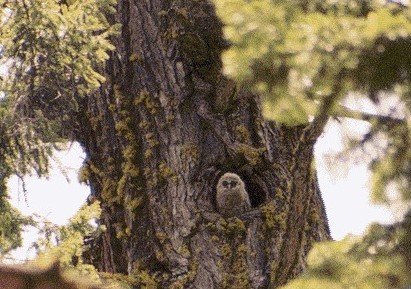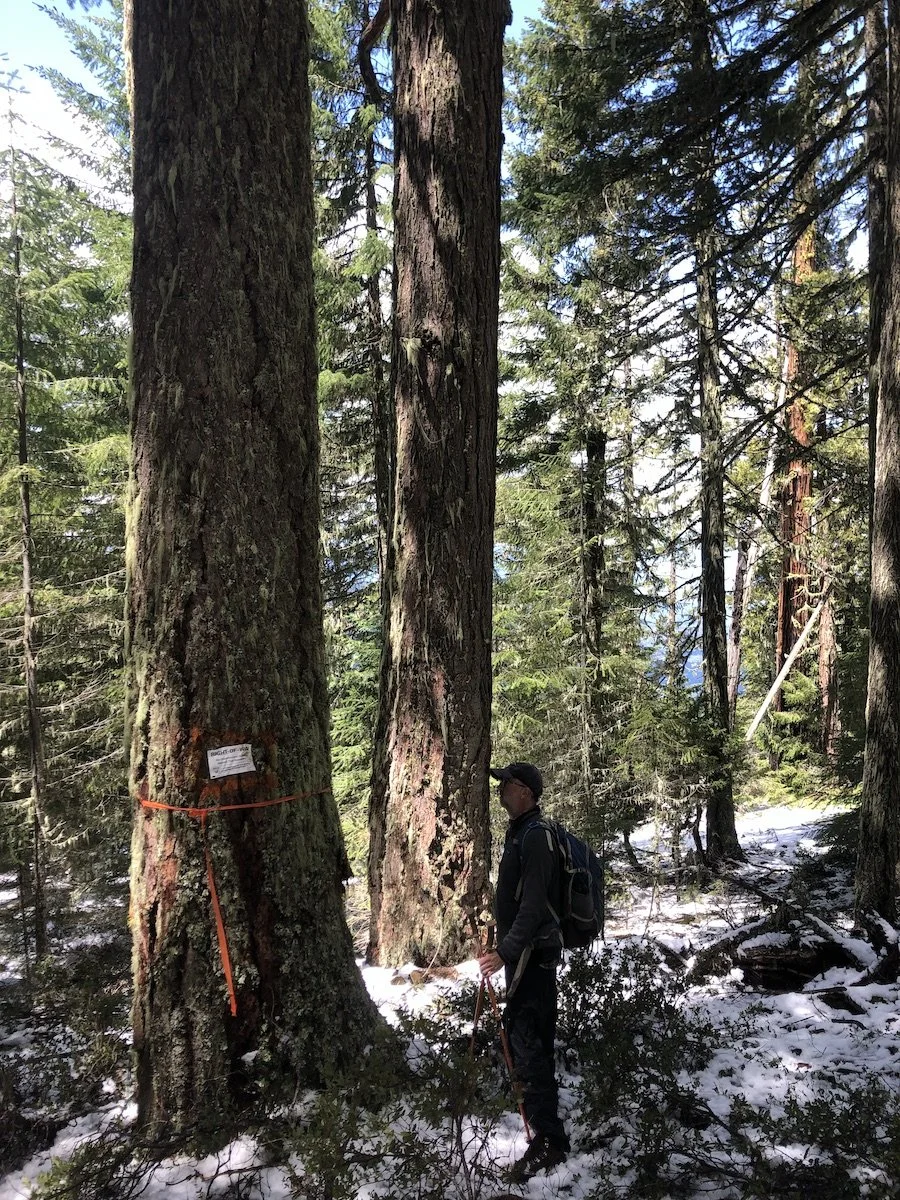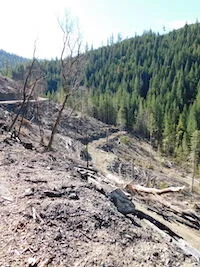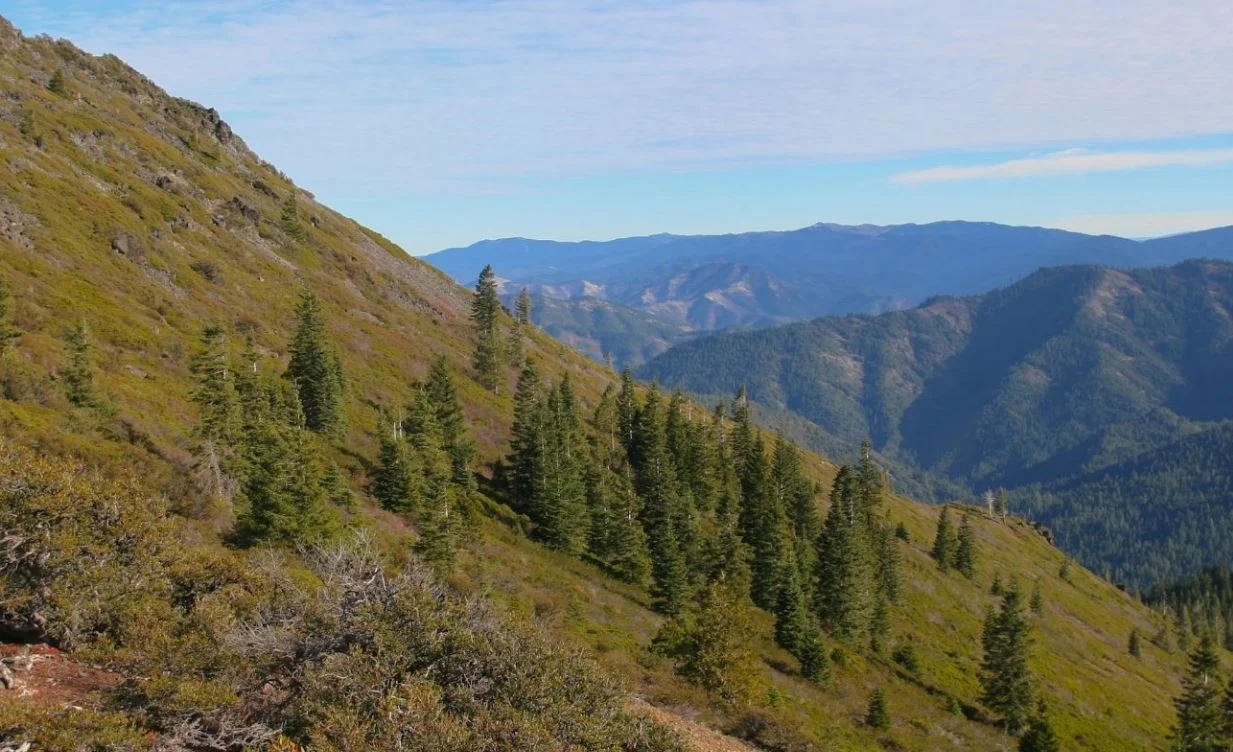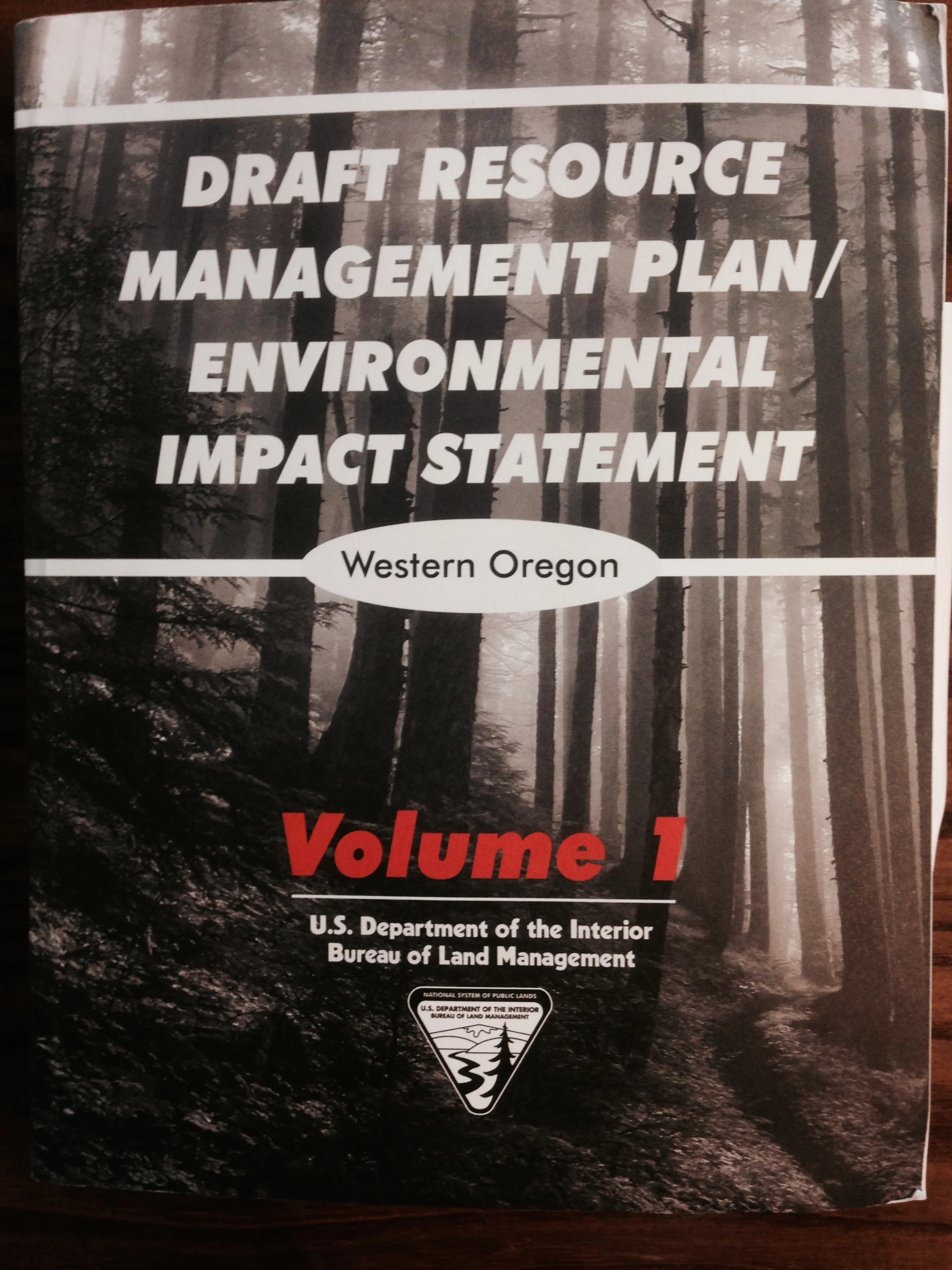The Medford Bureau of Land Management’s (BLM) clearcuts speak for themselves—and it's not a pretty story. Following the Rum Creek fire just upslope of the Wild & Scenic Rogue River outside of Galice, OR, the BLM engaged in extensive post-fire roadside clearcutting. Watch videos from the field report here.
Read MoreThe Medford District Bureau of Land Management's old-growth logging program is relentless and uncompromising. Currently, the 8,150-acre "Last Chance" timber sale calls for logging most of the remaining mature and old-growth forests in the foothills between Sunny Valley and Galesville. Click to learn more.
Read MoreThe northern spotted owl is a Pacific Northwest forest icon. The species relies on old-growth forests to survive, and much of its habitat is threatened by loss of habitat and habitat fragmentation due to logging. Learn more about this imperiled species of the PNW in this blog.
Read MoreFor the past 7 years, the timber industry has filed numerous lawsuits with the goal of reopening these lands for logging. The legal attempts extended from Medford federal courts and made it all of the way to the Supreme Court this winter before the highest court in the country declined to hear their case earlier this month.
Read MoreThe northern goshawk is an avian species whose population directly relies on the extent of the presence mature and old-growth forests and has been on the decline alongside mature and old-growth forests. The species is currently not listed under the ESA. Read more about the goshawk here.
Read MoreWe are so wild about the Siskiyou Mountains salamander, it is the KS Wild mascot! We continue to advocate on behalf of this species that is only found in the Klamath-Siskiyou region. Learn more about our efforts to protect this species through advocacy that dates back over two decades here.
Read MoreThe US Forest Service and Bureau of Land Management (BLM) released the first ever national inventory of mature and old-growth forests. Want to know what this all means for the protection of forests in the Pacific Northwest?
Read MoreSome timber advocates within the Bureau of Land Management (BLM) simply cannot abide the idea that there are old-growth forests designated as protected on public lands, so they’ve designed a new program called “Integrated Vegetation Management” to target Late Successional Reserves for logging. Learn more about the IVM project in this blog.
Read MoreWhat is groundtruthing? How does it make a difference in the federal agencies’ logging plans? How can you get involved to ensure proper land management of your public lands? Read on to find out!
Read MoreKS Wild and our allies recently challenged the BLM’s (now withdrawn) Lost Antelope timber sale. This timber sale would have contributed to increased fire hazard near or within the WUI through regeneration harvest in an area where many untreated slash piles remain from a previous timber sale.
Read MoreAs part of a team working on a state-wide effort to update Oregon forest practices through a historic agreement with the timber industry, KS Wild and Rogue Riverkeeper are working to fight clearcut logging that leaves behind flammable logging slash, causes sediment that fills salmon streams, and minimizes forest carbon storage that contributes to climate change.
Read MoreThe Klamath National Forest intends to remove 200-400 year-old trees and snags from the landscape to make room for dense timber plantations that offer sparse value to the forest ecology.
Read MoreThe Klamath National Forest proposes to log over 1,200 acres of post fire forests on the Siskiyou Crest. Scroll through this story map for more details on post fire forests and logging in the Klamath Siskiyous.
Read MoreFollowing decades of fire suppression and logging that created dense young forests, a return to ecosystem resiliency requires thinning second-growth plantations, retaining large trees and forest canopy, and returning the role of fire to these fire-dependent forests.
Read MoreIncreasingly timber interests, conservationists including KS Wild, scientists and federal land management agencies are coming together to focus logging activities on thinning previously logged plantations and in fire-evolved forest stands in which fire suppression has resulted in encroachment by less resilient off-site conifers.
Read MoreFew experiences are more evocative of the Pacific Northwest than the sight of a salmon leaping a waterfall. People gather to watch as they make their way to ancestral spawning grounds each year at Rainie Falls on the Rogue River or the mouth of Wooley Creek on the Salmon River. Some rivers of the Klamath-Siskiyou are strongholds for wild salmon, including the federally listed Northern California/Southern Oregon Coho Salmon
Read MoreUnlike most of North America, we are extremely fortunate to live in a region in which five major wildland complexes have thusfar survived the pressures from logging, mining and road construction. It is our job and responsibility to protect these special places for the those who come after us and for their intrinsic value.
Read MoreOn August 5, the Bureau of Land Management (BLM) signed a management plan for western Oregon, largely ignoring a formal protest from 22 conservation and fishing groups. The BLM plan eliminates protections for streamside forests, increases clearcutting in wet forests, and removes 2.6 million acres of federally managed public forests from the 1994 Northwest Forest Plan
Read MoreThe 1937 O&C Act overhauled the timber management and revenue distribution scheme. It allowed the federal government to pay fifty percent of gross timber revenues directly to the O&C counties, plus twenty five percent (for unpaid Railroad property taxes) to O&C lands. In 1953 Congress directed 25% of the revenue to road building and other capital improvements on the O&C lands, leaving only 50% paid to counties. These payment schemes tied timber harvests to county revenues and made county government a champion of increased logging.
Read MoreAfter four local public hearings and thousands of letters to elected officials, support for the Cascade-Siskiyou National Monument has been heard! On Thursday, January 12, 2017, President Obama used his authority under the Antiquities Act to expand the Cascade-Siskiyou National Monument in southern Oregon.
Read More

